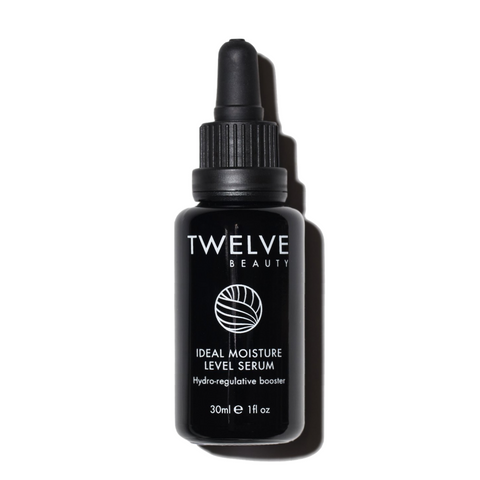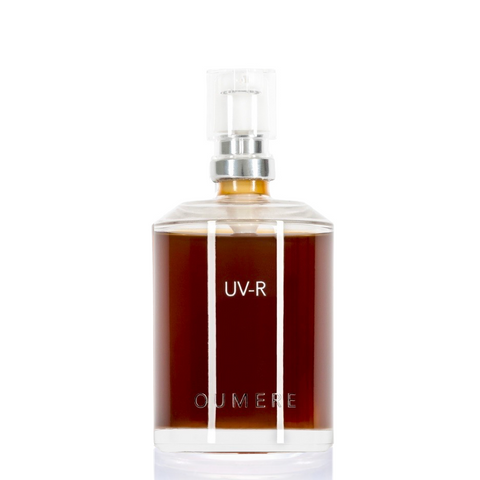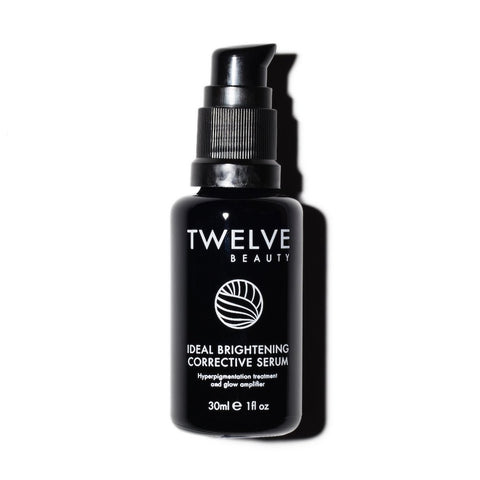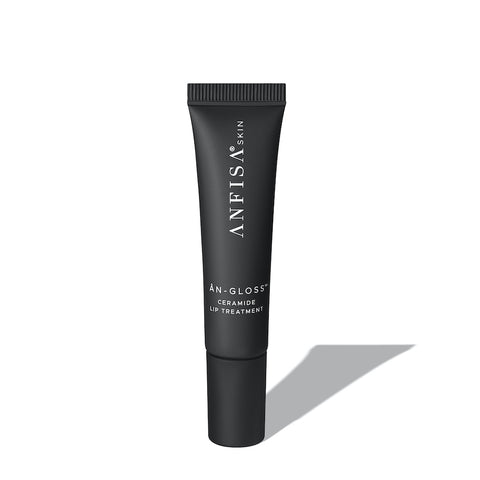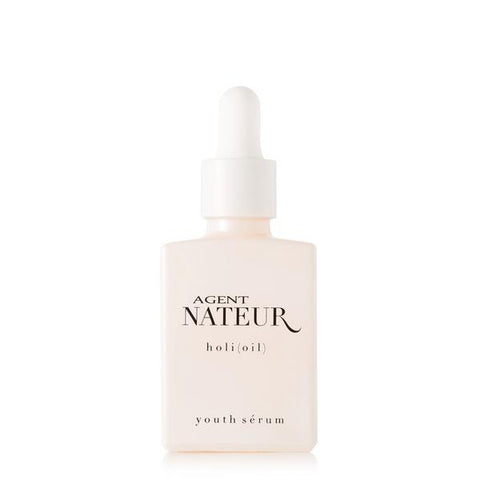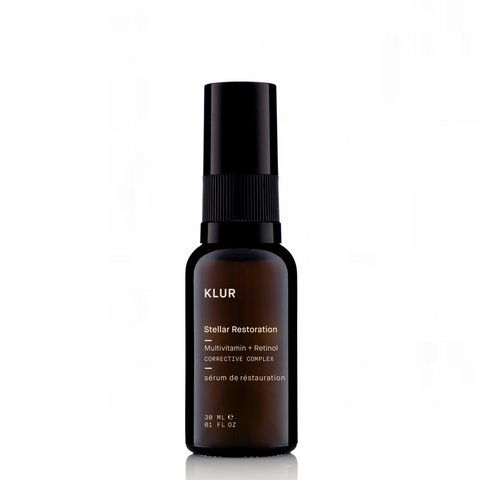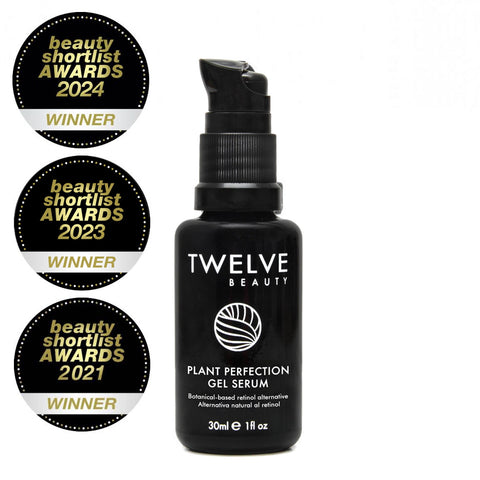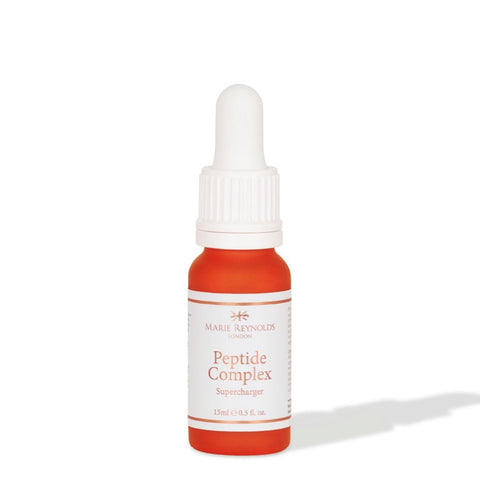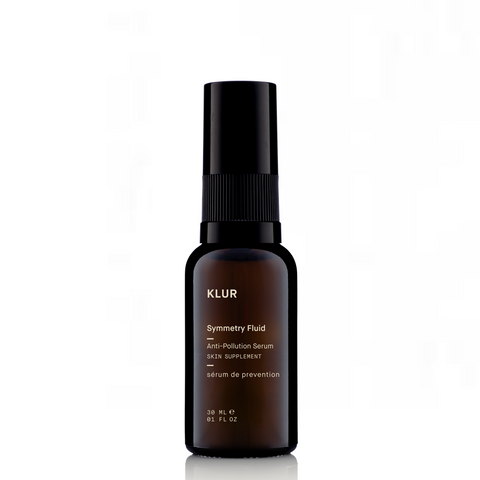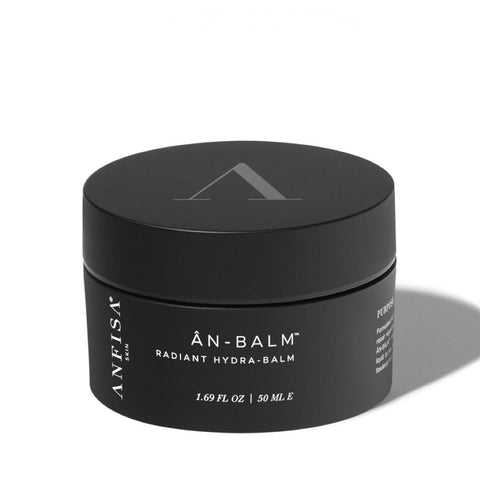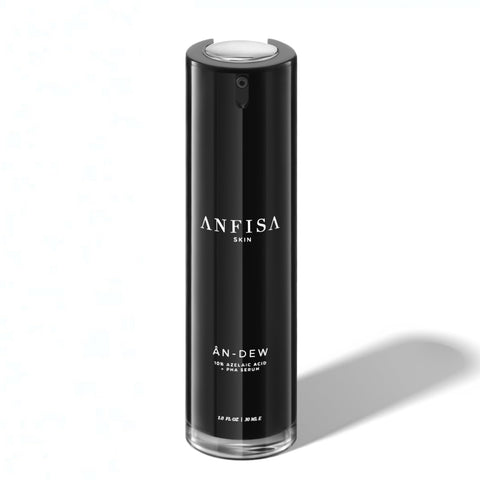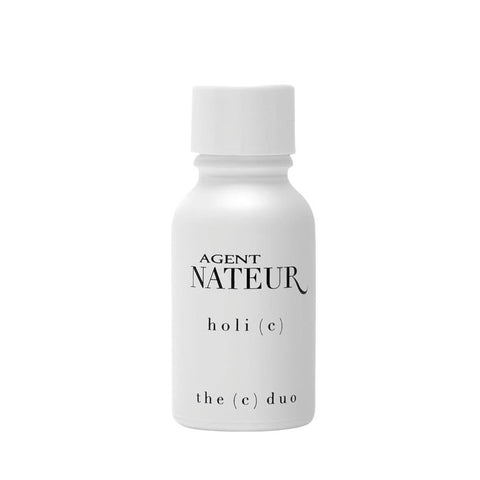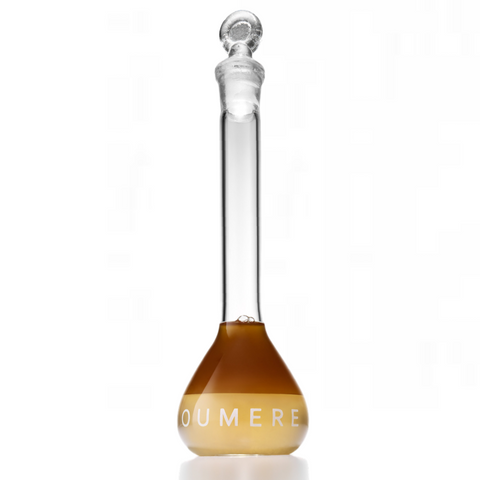Thermal Aging: Understanding its Effects on the Skin
April 24, 2024
We all know that UV rays are a main cause of skin aging, aka “photoaging”. However, did you know that heat, is also a huge contributor to skin aging? In this article, we delve into the world of thermal aging, uncover its causes and effects, and arm you with knowledge on how to protect the skin from this often neglected aspect of skin care.
Thermal aging, also known as heat-induced aging, refers to the premature aging of the skin caused by prolonged and repeated exposure to high temperatures. This exposure can come from various sources, including the sun, hot baths/showers, saunas, hot yoga, and even everyday activities like using hairdryers or heated styling tools, and even cooking.
Studies have found that once the skin’s temperature goes past 37.5°C, the state of the skin changes. For comparison purposes, normal skin temperature is between 31-36°C, in comparison, as little as 15-20 minutes sun exposure may increase dermal temperature to 40°C, while face steaming can easily get over 43°C, and in a hot yoga class the room is typically heated to 35-40ºC.
Here’s the most important thing, just like UV rays, heat can penetrate skin down to its deepest layers and damage the cells. In fact, studies have found that just thirty minutes of heat exposure, three times per week is sufficient to alter skin function for up to six weeks! Now, imagine being exposed to heat everyday!
|Collagen and Elastin Breakdown Leading to Fine Lines and Wrinkles
One of the primary effects of thermal aging is the breakdown of collagen and elastin fibers in the skin, in particular the latter. Elastic fibers are formed by tropoelastin (elastin) and by fibrillin-rich microfibrils. These components must be properly balanced to create functional elastic fibers that provide structure, firmness, and elasticity to the skin, and thermal stress alters this balance, which causes the elastic to no longer stretch and recoil properly. In addition, chronic increase in skin temperature induces metalloproteinases (MMPs) 1, 3 and 12, which are enzymes that destroy collagen and elastic fibers. All of which lead to the formation of fine lines, wrinkles, and sagging skin, as we well loss of skin elasticity and firmness.
Product Recommendation
KLUR
Sculpture + A Overnight Enrichment Cream <- Click to Shop
|Moisture Depletion
High temperatures can disrupt the skin's natural barrier function; when the barrier is damaged, the skin’s water retention function will decline, resulting in dryness, dullness, and rough texture. The skin may also become oily on the surface, as in an attempt to repair the barrier, the skin would produce more and thicker oil.
Product Recommendation
TWELVE BEAUTY
Ideal Moisture Level Serum <- Click to Shop
|Inflammation and Redness
Besides a declined ability in resisting bacteria and irritants due to damaged barrier function, which can lead to inflammation, acne, and sensitivity, prolonged exposure to heat can also cause the dilation of blood vessels in the skin, and an influx in mast cells and macrophages. These immune cells are responsible for chronic inflammation, increased blood flow and new angiogenesis, resulting in redness, inflammation, and the appearance of broken capillaries.
Product Recommendation
MARIE REYNOLDS LONDON
Restore <- Click to Shop
|Free Radical Damage and Premature Aging
Heat exposure triggers the production of free radicals in the skin. These unstable molecules can increase expression of MMPs, perpetuating the destruction of collagen and elastin and promoting oxidative DNA damage. Heat-induced oxidative stress also alters endogenous antioxidants such as glutathione, dehydrogenase-1 and heme oxygenase-1 that are important in both the body and the skin. Although invisible to the eyes, all of these gradually slow down our skin’s natural rejuvenation process, and appear on the skin in the form of premature aging, including dryness, dullness, loss of elasticity, wrinkles, and pigmentation, and since the skin’s ability in repairing itself also decreases, redness, itchiness, and even chronic conditions like eczema, rosacea, and psoriasis, may appear.
Product Recommendation
OUMERE
UV-R™ <- Click to Shop
|Hyperpigmentation
Persistent exposure to temperature, to the skin, are major skin injury. As a response, melanocytes (melanin producing cells), in an attempt to protect the skin, would produce an excess amount of melanin, leading to uneven skin tone and hyperpigmentation. Melasma can also be heat-induced.
In fact, dermatologists have found that women who were taking hot yoga upwards of five times a week were getting more discoloration and persistent redness than other patients.
Product Recommendation
EATH Library
All Day Radiance Light Concentration Cream <-Click to Shop
|Glycation
Glycation is a process in the body triggered by proteins, lipids, and nucleic acids reacting with sugar in the bloodstream. The end result of this reaction is the formation of Advanced Glycation End Products (AGEs). High levels of AGEs is detrimental for the skin. This is because, receptors for AGEs are found in both the epidermis and dermis, which essentially means, the AGEs will stick to the skin, affect keratinocyte and fibroblast function, adhere to existing collagen and elastin that normally help keep skin firm and supple and make them stiff, dry and brittle instead, accelerate inflammation and oxidative stress that further destroy these existing collagen and elastin, and lower the production of new collagen and elastin, as well as yellowing the skin.
The result, is skin that loses elasticity and firmness, sags, turns dull and yellowish, and forms wrinkles and fine lines, as well as inflamed breakouts.
Unfortunately, glycation is accelerated by high temperatures. Worse yet, when we sweat due to hot weather, the proteins in our sweat combine with the sugars on our skin, and glycation occurs, resulting in AGEs that can further accelerate premature skin aging.
Product Recommendation
TWELVE BEAUTY
Ideal Brightening Level Serum<-Click to Shop
While we cannot completely avoid heat exposure, we can take proactive steps to protect the skin from the effects of thermal aging.
|Avoid Excessive Heat
Not all of us can avoid cooking, but you can still limit exposure to high temperatures in other ways, such as opting for lukewarm baths/showers instead of hot ones, stop doing saunas and hot yogas all the time, stop steaming the face (it doesn’t and can’t open the pores anyway to get rid of clogged dirt in the pores), and using hair dryers and styling tools that do not involve heat (or at least, get those heated ones away from the face).
|Stay Away from the Sun and Wear SPF and Foundation
Now that you know UV rays are not the only way the sun can damage the skin, try to stay away from the sun as much as possible. Also, remember to apply sunscreen.
And guess what, foundation that contain minerals like titanium dioxide, zinc oxide, iron oxides, or kaolin also help, as these ingredients can act as physical blockers against infrared heat (this is also part of the reason why research found that the skin of those who wear foundation actually age slower than those who do not, as long as you are cleansing properly).
Product Recommendation
AGENT NATEUR
holi(soleil) SPF50 Ageless Firming & Plumping Sunscreen <- Click to Shop
Product Recommendation
AGENT NATEUR
holi(sun) SPF50 Tinted Sunscreen <- Click to Shop
Product Recommendation
TWELVE BEAUTY
Artemisia Power Protection Moisturiser SPF50+ <- Click to Shop
|Lower Skin Temperature and Hydrate Immediately After Exercising or Being in the Sun
We know taking a hot shower after exercising feels good, but it is important to help bring down the skin temperature as soon as possible. Try to take a lukewarm shower instead, and thoroughly wash the face with a gentle cleanser to get rid of the glycated sweat to avoid collagen and elastin breakdown, yellowing of the skin, dullness, loss of elasticity and firmness, sagging, and clogged pores.
Product Recommendation
AGENT NATEUR
acid(wash) Lactic Acid Brightening Cleanser <- Click to Shop
Product Recommendation
KLUR
Gentle Matter Daily Moisture Cleanser <- Click to Shop
If you have stayed in the sun longer than you should, put a sheet mask in the fridge before going into the shower (leaving masks in the fridge for too long can damage their efficacy), then thoroughly cleanse the face, put on some soothing hydrating toner and serums to calm and hydrate the skin, and put the mask on to help bring down the raised skin temperature, as using a cooled sheet mask can help constrict the blood vessels, reduce redness, and calm inflammatory reactions, while adding back lost moisture to the skin.
Product Recommendation
AGENT NATEUR
holi(water) Hyaluronic Pearl & Rose Essence <- Click to Shop
Remember to use a face oil and ceramide products afterwards to help repair the damaged skin barrier.
Product Recommendation
MARIE REYNOLDS LONDON
Ceramide Complex Supercharger <- Click to Shop
Product Recommendation
OUMERE
ÂN-GLOSS™ Ceramide Lip Treatment <- Click to Shop
Product Recommendation
AGENT NATEUR
holi(oil)Ageless Face Serum <- Click to Shop
|Use Products That Can Stimulate Collagen and Elastin Synthesis
Since one of the major effect of thermal aging is collagen and elastic fiber breakdown, it is extremely important to use skincare products that can effectively stimulate collagen and elastin synthesis. Ingredients that are scientically-proven to promote the production of collagen and elastin include retinol, peptides, Bakuchiol, and alpha hydroxy acids (AHAs). Additionally, taking collagen powder supplements is also clinically proven to help the body produce more collagen, elastin, and hyaluronic acid!
Note that collagen in topical skincare products cannot stimulate collagen synthesis, as it cannot penetrate the epidermis of the skin, let alone get down into the dermis. This is because collagen is a complex and massive molecule——they just sit on top of the epidermis. They also cannot replace the collagen that the skin naturally produce to improve fine lines, wrinkles and elasticity. With that being said, collagen does provide moisturizing benefits.
Product Recommendation
KLUR
Stellar Restoration Corrective Complex <- Click to Shop
Product Recommendation
AGENT NATEUR
holi(lift) Ageless Lifting and Firming Serum <- Click to Shop
Product Recommendation
TWELVE BEAUTY
Plant Perfection Gel Serum <- Click to Shop
Product Recommendation
MARIE REYNOLDS LONDON
Peptide Complex Supercharger <- Click to Shop
Product Recommendation
AGENT NATEUR
holi(mane) Collagen & Pearl Powder <- Click to Shop
|Protect the Skin with Antioxidants
As mentioned above, heat exposure triggers the production of free radicals in the skin, which can subsequently result in premature aging, as well as conditions like redness, itchiness, eczema, rosacea, and psoriasis. Thus antioxidant-rich skincare products are a must in any skincare routine, as they help combat free radicals and protect your skin from oxidative stress.
What are antioxidants? Antioxidants are the molecules that prevent oxidation in other molecules and stop the production of free radicals which may damage our cells.
They work by scavenging the free radicals and offering up one of their electrons to prevent healthy cells and tissues from breaking down. This halts the chain reaction of free radical production, thereby preventing oxidative stress and skin cell damages, and allowing our skin to heal and repair itself.
Product Recommendation
KLUR
Symmetry Fluid Skin Concentrate <- Click to Shop
Product Recommendation
ANFISA
ÂN-BALM Radiant Hydra Balm <- Click to Shop
|Prevent Accelerated Melanin Production On the Daily
Heat triggers the production of melanin, and it tends to form faster than it is shed away. If left accumulated and untreated, pigmentation issues will become deeply rooted and hard to improve. One way to tackle this is through inhibiting tyrosinase on a daily basis.
Tyrosinase is the enzyme responsible in synthesizing melanin through melanogenesis. By inhibiting its activities and breaking it down, you can speed up the fading of existing hyperpigmentation whilst preventing future spots from forming. Ingredients that can inhibit tyrosinase activity includes Vitamin C (for example, Sodium Ascorbyl Phosphate and Tetrahexyldecyl Ascorbate THD), Ellagic Acid, Ferulic Acid, Hexylresorcinol, Niacinamide, Iridoids, Cornus Fruit Extract, Ginsenocide, Licorice Root, Noni, Mallow, Yarrow, Broccoli Sprout, Hawkweed, Daisy, Pearl Powder, and Resveratrol, etc.
Product Recommendation
EATH LIBRARY
The Pure Wonder Active Serum <- Click to Shop
Product Recommendation
KLUR
Brilliant Light Multi-Correctional Repair Serum <- Click to Shop
Product Recommendation
ANFISA
ÂN-DEW 10% Azelaic Acid + PHA Serum <-Click to Shop
|Don’t Forget to Fight Glycation
In addition to eating less sugar and fried, seared, roasted and grilled foods, try incorporating ingredients in your skincare routine that can topically provide anti-glycation effects. Some of these ingredients include Resveratrol, Palmitoyl Tetrapeptide-7, Korean Red Ginseng, Ferulic Acid, Green Tea, Turmeric, as well as sage, rosemary and lemon balm extracts.
Product Recommendation
AGENT NATEUR
holi(c) The C Duo <- Click to Shop
Product Recommendation
OUMERE
Serum Bioluminelle™ <- Click to Shop
Also in The Journal

The Anti-Aging Gold Standard: How Retinol Reshapes The Skin
November 12, 2025
Learn why retinol is the gold standard for anti-aging, how it works, what similar ingredients exist, and some common myths and misconceptions.

The Gut-Skin Connection: The Path to Healthy Skin
October 26, 2025
Acne, eczema, rosacea, and sensitivity can all be linked to the gut health, and even gluten? Learn all about the connection between the gut and the skin.

The Secret to Reversing Skin Aging! How Growth Factors & Peptides Help Turn Back the Clock
October 13, 2025
Tired of wrinkles, sagging skin, lack of elasticity, inflammation, dryness, and even hair loss? Learn how growth factors and peptides reverse skin aging.
+Recent Articles
-
The Anti-Aging Gold Standard: How Retinol Reshapes The Skin
November 12, 2025
-
The Gut-Skin Connection: The Path to Healthy Skin
October 26, 2025
-
The Secret to Reversing Skin Aging! How Growth Factors & Peptides Help Turn Back the Clock
October 13, 2025
-
The Best Ways and Times to Take Different Supplements
August 19, 2025
-
Luxury vs. Budget-Friendly Skincare Products——What Are Their Differences?
August 06, 2025
-
How to Prevent and Improve Post-Inflammatory Hyperpigmentation (PIH)
July 10, 2025
-
How to Prevent and Improve Post-Inflammatory Erythema (PIE)
July 08, 2025
-
The Ultimate Cleansing Guide to Improve Skin Conditions
June 03, 2025
-
Do You Have Sugar Face? How Does Sugar Affect Our Skin and Appearance?
May 20, 2025
-
Do You Have Gluten Face? How Does Gluten Affect Our Skin and Appearance?
April 15, 2025
Subscribe to get skincare knowledge delivered to your inbox!



